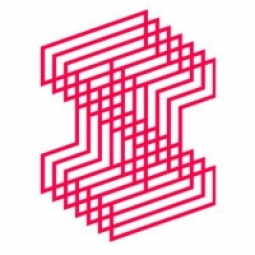Download PDF
Revitalizing Starbucks' Red Cup Campaign: A Case Study
Applicable Industries
- Food & Beverage
Applicable Functions
- Sales & Marketing
The Challenge
Starbucks, the creator of the festive coffee and the original Red Cup, was facing increased competition during the holiday season. Other brands had begun to release their own versions of 'Christmas Cups' with a range of festive drinks, making the holiday period more competitive than ever. Starbucks needed to remind consumers of its originality and drive consideration and footfall. Additionally, the brand had to navigate the controversy around marking the start of the festive season too early, a move that some consumers love while others disapprove of. The challenge was to lean into this tension and celebrate the launch of Starbucks’ Red Cup in a way that would excite Super Fans and raise a refreshing smile amongst Aspirational Millennials.
About The Customer
The customer in this case study is Starbucks, a multinational chain of coffeehouses and roastery reserves headquartered in Seattle, Washington. As the world's largest coffeehouse chain, Starbucks is seen as the main representation of the United States' second wave of coffee culture. Known for its iconic Red Cup during the festive season, Starbucks has a significant presence in the market during this period. However, with increasing competition from other brands releasing their own festive drinks and cups, Starbucks needed to reassert its position as the original creator of festive coffee and the Red Cup.
The Solution
In a shift from previous Red Cup campaigns that focused on the product, Starbucks decided to put people and their reactions at the heart of their launch film. The brand aimed to celebrate the launch of the Red Cup and the festive drinks that launch alongside it in a tongue-in-cheek, self-aware, and humorous way. This approach was designed to engage Super Fans and Aspirational Millennials, two key demographics for the brand. The launch film and cut-downs were rolled out on Video on Demand (VOD), YouTube, and social media across various markets in Europe, the Middle East, and Africa (EMEA) throughout November. This strategy represented a broader shift for the brand to focus on human connections, aligning with the brand's overall marketing strategy.
Related Case Studies.

Case Study
The Kellogg Company
Kellogg keeps a close eye on its trade spend, analyzing large volumes of data and running complex simulations to predict which promotional activities will be the most effective. Kellogg needed to decrease the trade spend but its traditional relational database on premises could not keep up with the pace of demand.

Case Study
HEINEKEN Uses the Cloud to Reach 10.5 Million Consumers
For 2012 campaign, the Bond promotion, it planned to launch the campaign at the same time everywhere on the planet. That created unprecedented challenges for HEINEKEN—nowhere more so than in its technology operation. The primary digital content for the campaign was a 100-megabyte movie that had to play flawlessly for millions of viewers worldwide. After all, Bond never fails. No one was going to tolerate a technology failure that might bruise his brand.Previously, HEINEKEN had supported digital media at its outsourced datacenter. But that datacenter lacked the computing resources HEINEKEN needed, and building them—especially to support peak traffic that would total millions of simultaneous hits—would have been both time-consuming and expensive. Nor would it have provided the geographic reach that HEINEKEN needed to minimize latency worldwide.

Case Study
Energy Management System at Sugar Industry
The company wanted to use the information from the system to claim under the renewable energy certificate scheme. The benefit to the company under the renewable energy certificates is Rs 75 million a year. To enable the above, an end-to-end solution for load monitoring, consumption monitoring, online data monitoring, automatic meter data acquisition which can be exported to SAP and other applications is required.

Case Study
Coca Cola Swaziland Conco Case Study
Coco Cola Swaziland, South Africa would like to find a solution that would enable the following results: - Reduce energy consumption by 20% in one year. - Formulate a series of strategic initiatives that would enlist the commitment of corporate management and create employee awareness while helping meet departmental targets and investing in tools that assist with energy management. - Formulate a series of tactical initiatives that would optimize energy usage on the shop floor. These would include charging forklifts and running cold rooms only during off-peak periods, running the dust extractors only during working hours and basing lights and air-conditioning on someone’s presence. - Increase visibility into the factory and other processes. - Enable limited, non-intrusive control functions for certain processes.

Case Study
Temperature Monitoring for Restaurant Food Storage
When it came to implementing a solution, Mr. Nesbitt had an idea of what functionality that he wanted. Although not mandated by Health Canada, Mr. Nesbitt wanted to ensure quality control issues met the highest possible standards as part of his commitment to top-of-class food services. This wish list included an easy-to use temperature-monitoring system that could provide a visible display of the temperatures of all of his refrigerators and freezers, including historical information so that he could review the performance of his equipment. It also had to provide alert notification (but email alerts and SMS text message alerts) to alert key staff in the event that a cooling system was exceeding pre-set warning limits.

Case Study
Coca-Cola Refreshments, U.S.
Coca-Cola Refreshments owns and manages Coca-Cola branded refrigerators in retail establishments. Legacy systems were used to locate equipment information by logging onto multiple servers which took up to 8 hours to update information on 30-40 units. The company had no overall visibility into equipment status or maintenance history.





